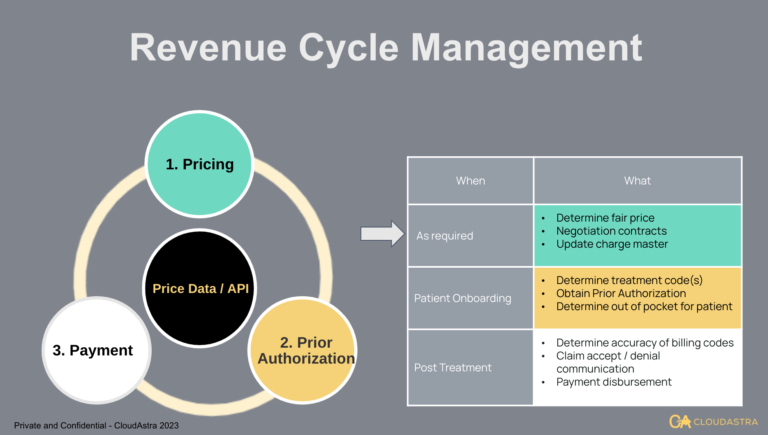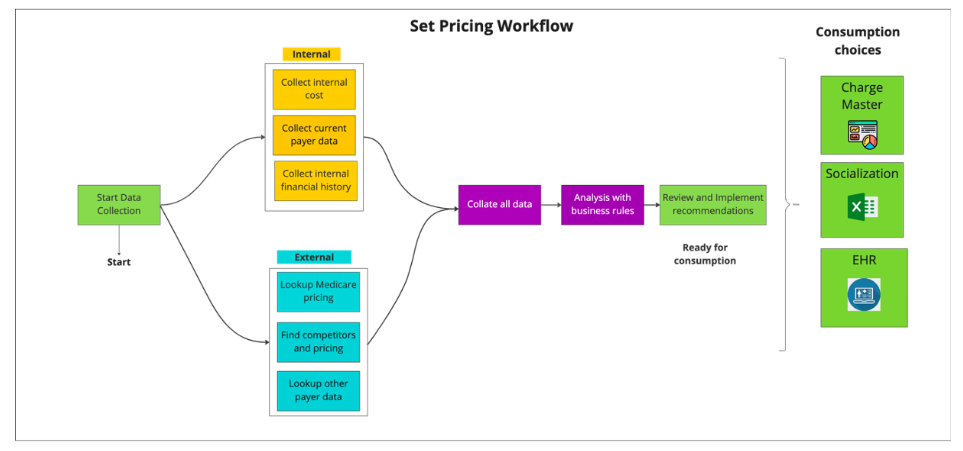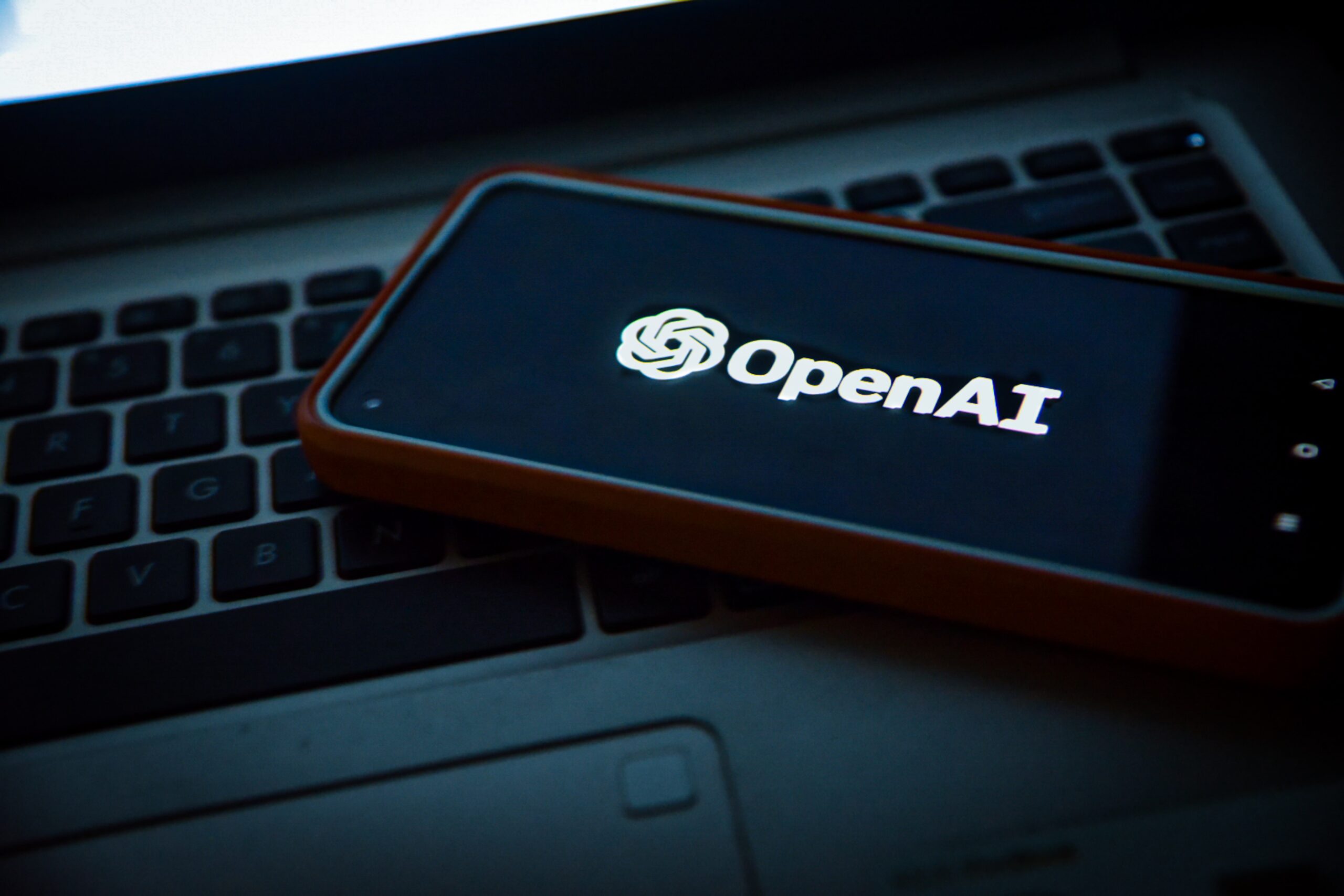Orchestrate Healthcare Revenue Cycle Management with ChatGPT and Robotic Process Automation – Part 1 (Set Pricing)
Orchestrate Healthcare Revenue Cycle Management with ChatGPT
Part 1 - Set Pricing

The advent of generative AI technology has changed the landscape of how AI is applied to business problems and is going to change rapidly. Although AI has transformed how several consumer and business applications are developed and used (think streaming of video and music, maps, business networking, and social networks), generative AI has the potential to bring AI closer to the everyday business user.
Reduce staff burden and improve revenue
Let us consider the Revenue Cycle Management in Healthcare and drill down how generative AI tools such as ChatGPT can have an immediate effect and how healthcare systems can take advantage of these tools to reduce the burden on their staff and improve revenue.
What is revenue cycle management?
Healthcare revenue cycle management is the end-to-end price-to-payment cycle. (P2P Healthcare cycle).
1. Set Price: In the first hospitals set prices for various services that are offered as either inpatient or outpatient services. To determine the price hospitals have to consider complicated costing mechanisms to allocate costs so they know how to price a service. This comes in conjunction with a fair price. In the second
2. Prior Authorization: This typically happens when a patient presents themselves to the hospital either via phone or in person. Hospitals need to get prior authorization so they have a reasonable certainty that the charges will be reimbursed.
3. Payment: The final part of the cycle is the payment to the hospital either by insurance companies or by the patients and a combination if there is copayments involved

Set Pricing: In this blog we will drill down into the first step of the revenue cycle management process, setting prices. There are several factors that can influence how prices are set for each of the services. The factors can be internal and external.
Internal factors are typically cost allocation and determination of the base cost of the procedure, the number of times the procedure is performed, the typical historical margin for the procedure. Other internal factors could be quality and patient satisfaction with the procedure.
External factors could be the number of healthcare systems that offer similar procedures, the reimbursement rate for Medicare which often acts as a guard rail, price movement by the competition (raising or cutting prices), demand for the procedure, and the opportunity to add more customers if it is price sensitive.
This typically ends up as a workflow orchestration process where each of these inputs are factored into the decision process.
Current process
Typical pricing workflows have a number of manual components. All the relevant data needs to be collected and analyzed. Communication within the healthcare systems and with outside parties such as process consultants or payers is typically via spreadsheets or emails.

How can chatGPT and automation help?
Data Collection
The pricing workflow as depicted on top has a lot of manual steps. Looking up data from various sources can be time-consuming. The first “low hanging fruit” solution is to automate the lookups This can be done using training data that can be supplied to ChatGPT, and automated bots that can be created using ChatGPT that can then go and lookup data.
Data Presentation
The second phase is the collection and presentation of data. Typically this has involved a lot of different teams such as IT and business working together to create business intelligence analytics that can be consumed. There are traditionally a few issues that come to the surface at this stage. The creation of these analytics is non-trivial and involves time and money. Requirements and procedures could involve more time and money. Secondly, the presentation of data has been typically done using charts. A number of times these charts are just pictorial representations of data and do not immediately point out actionable items.
This is an area where generative AI tools such as ChatGPT can quickly help business users. By leveraging the power of ChatGPT, the collected data can be presented in a more human-readable and interactive format for the business users to consume the data. Changes can typically be implemented quicker and less expensively than traditional analytics.
Analysis
Similar to data presentation, analysis such as the generation of excels so teams can collaborate and analyze data can be achieved using ChatGPT. Using generative techniques, the information can be organized into formats that are easily consumed by what-if analysis engines for example to analyze data. Just as important is the ability to create “Business Rules” within the ChatGPT instructions. Typically these business rules would be buried in code and with ChatGPT there is an opportunity to create business rules as ChatGPT directives that would be in natural language.
Implement recommendations
Recommendations such as requests for negotiation to payers, updating of the chargemaster, and sending data to payers or to other partners using APIs can all be done using ChatGPT-based automation. This can make changes to the chargemaster a more real-time process than what is possible in a traditional environment. Cascading changes such as the publication of publicly consumable pricing bundles and machine-readable files can also be automated. This automation will need plugins for ChatGPT such as the FHIR/HL7 plugin authored by CloudAstra and sooner than later these plugins will be ubiquitous.
Contract generation
Generative AI tools such as ChatGPT are great for content generation in cases such as contract generation. They can cut down a lot of the effort in setting up oiler plates for contracts. This could be leveraged to generate contracts and simplify a laborious process.
Pure ChatGPT or a Hybrid solution
ChatGPT is currently not HIPAA certified. While ChatGPT is very good at interpreting and communicating back in natural language, healthcare systems arguably have sophisticated systems that have an intimate knowledge of their own data with security built in. So a win-win could be to leverage the best of both worlds. If a simple workflow could be created where data could be gathered from a variety of sources by healthcare-specific queries, de-identified and relevant data is sent to ChatGPT, then ChatGPT could leverage all the data and send back analysis and recommendations.
A sample hybrid implementation would for example look like this.

ChatGPT User Interface

As you can see the recommendations are easy-to-read instructions rather than complex charts and analytics.
In this blog, we have seen how information can be collected from various systems and passed to ChatGPT so business logic and instructions can be executed within ChatGPT. We have also seen how ChatGPT can generate conversational recommendations that are different from typical graphs, and tables generated by analytics tools that then need to be interpreted before recommendations can be gleaned from them. This is the difference ChatGPT and other generate AI tools will bring to business applications and transfer the power to the business users.
In the next blog we will discuss how the same principle can be applied to the Prior Authorization process and using a combination of AI (ChatGPT and others) and Robotic Process Automation a manual process can be converted into a smoother and more productive digital process.
Contact Us
Let us innovate and (AI)generate together. If you are interested in exploring this further contact us at https://cloudastra.ai/contact-us

